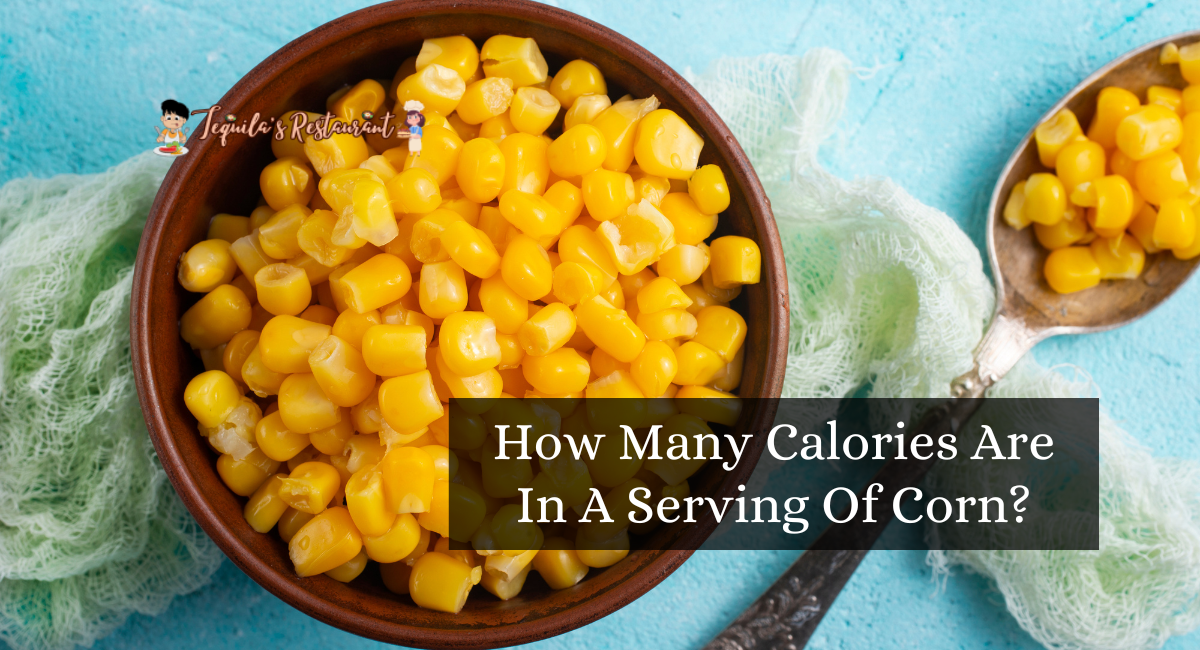Corn is one of the most widely consumed and cultivated foods globally. More than 200 varieties are grown in the United States alone, where eating maize on the cob is a popular family tradition. In Latin America, corn husks create tamales, and ground corn is a crucial ingredient in many traditional dishes, including tortillas. So, how many calories are in a serving of corn?
Since corn is inherently gluten-free, it is an excellent substitute for wheat. In addition, it contains numerous vitamins, minerals, and antioxidants that are beneficial to your health.
What Is Corn?
Corn serves as both a grain and a vegetable.
In the culinary world, corn on the cob is typically categorized as a vegetable, whereas the dry kernels used to make popcorn are known as whole grains.
Corn evolved in Mexico 9,000 years ago, and its original name is “maize” in many world regions. Native Americans cultivated and harvested this crop as their primary sustenance source.
It is currently one of the most widely consumed cereal grains globally.
Corn is typically white or yellow but can also be red, purple, or blue.
It is consumed as sweet maize, tortillas, popcorn, polenta, chips, oil, grits, cornmeal, and syrup and is added to other foods.
In addition, it is commonly used as fuel and animal feed. 40% of the maize grown in the United States is used for fuel, while 60%–70% of the corn produced globally is used to feed animals.
Highly Nutritious
Corn is high in carbohydrates and contains abundant fiber, vitamins, and minerals. Additionally, it is deficient in protein and fat.
One cup of delicious yellow corn (164 grams) contains:
- Calories: 177
- Carbohydrates: 41 gm
- Protein: 5.4 gram
- Fat: 2.1 grams
- Fiber: 4.6 grams
- Vitamin C: 17% of the daily value
- Thiamine (vitamin B1): 24 percent of the DV
- Folate (vitamin B9): 19% of the DV
- Magnesium: 11% of the Daily Value
- Potassium: 10% of the Daily Value
The majority of the carbohydrates in corn originate from starch, which, depending on how much you consume, can cause a rapid rise in blood sugar. However, it also contains a significant amount of fiber, which can help control blood sugar levels.
Due to its impressive nutrient profile, getting entire corn and popcorn inside of a balanced diet is beneficial for the majority of people. Additionally, this food is inherently gluten-free and can be consumed by those who avoid gluten.
Conversely, processed corn-based goods may be less nutritious, as refined oil, syrup, and crisps lose beneficial fiber and other nutrients during production. In addition, many processed foods contain excessive levels of added salt, sugar, or fat.
Corn Oil
Corn contains between 5 and 6 percent fat, making it a low-fat food.
However, maize germ, a plentiful byproduct of corn milling, is high in fat and is used to produce corn oil, a popular cooking ingredient.
Linoleic acid, a polyunsaturated fatty acid, makes up the majority of refined maize oil, while monounsaturated and saturated fats make up the remainder.
It also contains significant quantities of vitamin E, ubiquinone, and phytosterols, which increase its shelf life and make it potentially effective at reducing cholesterol levels.
How To Cook And Use Corn?
Corn is a versatile product you can incorporate into your diet.
Fresh, refrigerated, and canned sweet corn and corn on the cob are widely available in grocery stores and farmers’ markets.
You can prepare fresh cobs by heating them over a grill or by simmering them in water. Typically, they are served with melted butter and seasoning.
You can add kernels to soups, salads, and vegetable dishes or serve them with butter, olive oil, and seasonings.
Other maize products, such as flour and dried kernels, can also be utilized. You can create tortillas with corn flour that has been finely ground, water, and salt. Baking sliced pieces with oil and seasonings can transform these into homemade chips.
Finally, dried kernels can create popcorn on the stovetop or in an air popper for a satisfying snack.
Corn is rich in dietary fiber and phytochemicals that may promote digestive and eye health.
However, it is high in starch, can cause a blood sugar surge, and may prevent weight loss if consumed in excess. Additionally, the safety of genetically modified maize may be a concern.
Still, when consumed in moderation, maize can be part of a healthy diet.
Thank you for reading…..
